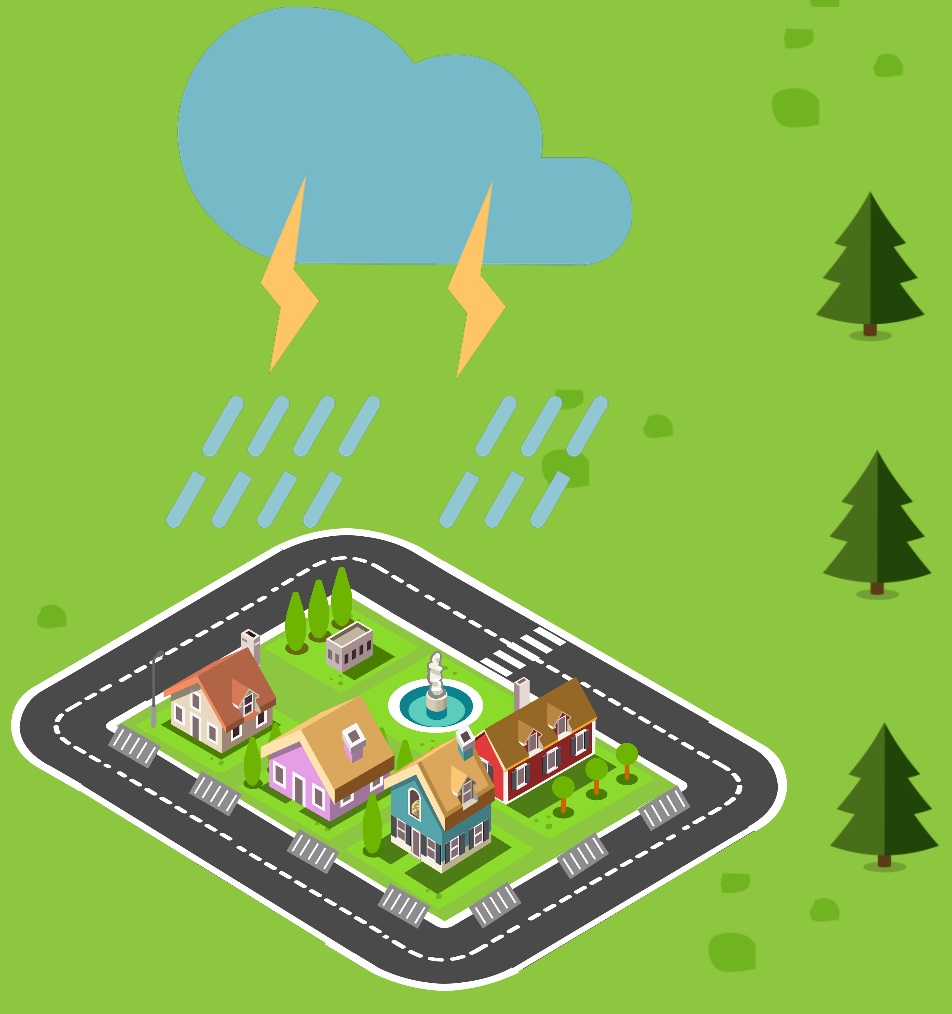Stormwater
Stormwater
What is it? 
Stormwater is commonly understood as runoff, from rainfall or snowmelt events, that flows over land and constructed surfaces (e.g., roofs, parking lots and roads).
Stormwater flows into storm drains (e.g., grates on the sides of streets), other stormwater management infrastructure, or directly into waterways.
How does stormwater influence water quality in the Bow River Basin?
As water flows over land and constructed surfaces, it picks up pollutants, sediment and debris, including motor oil, road salt, sand, fertilizer and excrement.
The Government of Alberta and most municipalities have standards and guidelines in place to help ensure contaminants in stormwater are removed to an appropriate level prior to the water being discharged into a receiving river or lake.
To meet these standards and guidelines, urban areas are designed to include stormwater management features. Common design features include storm drains and pipes, stormwater ponds and wetlands, and other types of green infrastructure (e.g., bioswales, rain gardens and permeable pavement), which drain stormwater and slow runoff, helping to remove some of the contaminants.
What can we do about it?
Do not pour motor oil, paint, or other chemicals down any kind of drain (whether storm drains or sinks in your home). Dedicated hazardous waste facilities exist for materials like these.
Garbage, household greywater (residual water from washing yourself or your dishes/laundry) and sewage should not be put down storm drains.
Use care when applying fertilizer to your outdoor spaces. Consider using a drop spreader to keep fertilizer off driveways, sidewalks and roads, as this reduces how much fertilizer ends up in stormwater.
Where you can, remove impervious surfaces. In some places, impervious concrete and asphalt can be replaced with porous asphalt or permeable pavement. It may also be possible to change the design to reduce the area of paved surface.
Use Low Impact Development (LID) techniques in urban areas, as they can make a big difference to stormwater quality and quantity, as well as groundwater recharge.
Where can I find more information?
Alberta Low Impact Development Partnership
Alberta Government Stormwater Management Guidelines
Urban Runoff – Low Impact Development
City of Calgary History of Stormwater page
